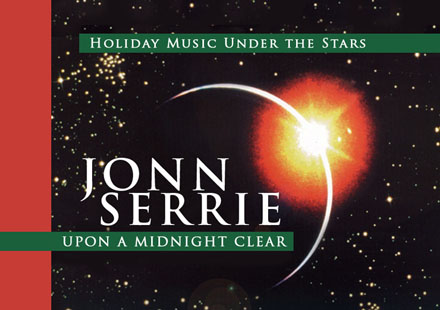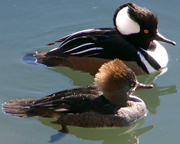Level: 3rd Grade Science
Level: 7th Grade Science
During the course of a year the Earth completes one orbit around the Sun. To us on Earth we see this as the Sun moving against the background of stars through the year, along an imaginary line which we call the ecliptic. This defines the plane in which the Earth and most of the other planets orbit around the Sun. The directions to the north and south ecliptic poles are at right angles to this. The Zodiac is the band of constellations running along the ecliptic.
Previous Issues

FERNBANK SCIENCE PRESENTS
JOHN SERRIE LIVE IN CONCERT
ONE SHOW ONLY
FRIDAY, DECEMBER 6, 2013
TICKETS: $10.00
Come find a few moments of peace under the stars and experience a real gift.

This time of year the beautiful colors of the trees are very noticeable. Why do trees “change” their summer green leaves to the brilliant reds, yellows, purples, and oranges which we associate with autumn? The broadleaved trees of the Temperate Deciduous Biome are known as deciduous plants which mean they change seasonal. Broadleaves require a lot of water to keep the leaves growing and healthy. Therefore the sap of these trees is composed primarily of water, almost 99%. When the cooler and cold temperatures approach in fall and the sun’s angle decreases, trees prepare for the winter by moving water and valuable sugars to their roots. Water when reaching temperatures of 4 C (39 F) starts to expand. So if trees left large amounts of water in their stems and trunks they would split apart thus killing the tree. When trees move the water to the roots the leaves are cut off without a water supply. The leaves will soon die but before dying they move the valuable green chlorophyll pigment out of their leaves and into their stems and twigs.

With the green pigment gone from the leaves, the other pigments (which have always been in the leaves) now become visible. So technically the leaves are not changing colors they are revealing their colors. We now see the yellows (xanthophyll pigments), and the oranges and purples (carotenoid pigments). Some plants that have high sugar content to their sap can form a secondary pigment under sunny and cold conditions called anthocyanin. This is the pigment which gives us the deep brilliant oranges visible in trees such as sugar maples. Eventually, even these pigments get moved to the twigs and stems and the leaves turn brown from the existing tannic acids and other phenolic compounds. Curious if this really happens? Gently scratch the tree’s twigs and the green chlorophyll will be visible. Also careful observation of a leaf as it “changes” its colors will show that the green color moves towards the leaves’ veins just before disappearing completely.
Click here for the "Did You Know" archive
Celebrate A Season of Giving "For the Kids" at Fernbank Science Center
Beginning December 2-14, 2013 Fernbank Science Center will be a collection site for both the Atlanta Community Food Bank and Toys for Tots. Bring your donations of any non-perishable food items and/or new, unwrapped toys to help families and kids in need this holiday season.
In addition, please join us Friday night, December 13, 2013 for our seasonal planetarium shows “Snow Flake Puzzle" (7 pm), and “Seasons of Lights” (8 pm). You will also enjoy "Sounds of the Seasons" musical selections from a local DeKalb Elementary School Chorus. A donation of non-perishable food items and/or new, unwrapped toys to help families or kids in need this holiday season will serve as your ticket for both shows! We ask that you please make a $5 minimum donation per person in your party for this event.
Following the shows, if the sky is clear, peer through the largest telescope in the SE at Fernbank Science Center’s Dr. Ralph L. Buice, Jr. Observatory.
Join us for "Stories Under the Stars of Winter"
Celebrating the Winter Solstice
On Friday at 7:00 pm, December 20, 2013, put on your favorite pajamas, grab your favorite Teddy Bear and curl up under the stars in the planetarium. We will explore the December constellations and enjoy the vintage story of “Wynken, Blynken and Nod,” hear the story about a surprise gift for the Mole Family and sing a special version of “Twinkle, Twinkle, Little Star.”
Admission to the program is one new teddy bear (or other new stuffed animal), $5.00 value or greater, per person. The stuffed animals will be donated to the children at Children’s Healthcare of Atlanta at Egleston.
Following the show, if the sky is clear, peer through the largest telescope in the SE at Fernbank Science Center’s Dr. Ralph L. Buice, Jr. Observatory.
Science Article of the Month
A new species of carnivorous dinosaur -- one of the three largest ever discovered in North America -- lived alongside and competed with small-bodied tyrannosaurs 98 million years ago. This newly discovered species, Siats meekerorum, (pronounced see-atch) was the apex predator of its time, and kept tyrannosaurs from assuming top predator roles for millions of years. Read More>> | More articles>>
Do you have a question or a suggestion?
Please email us at:
fernbankmail@fc.dekalb.k12.ga.us

Teacher Resources
![]()
Children's Science
Newsletters
Bird of the Month
Can you I.D. this Bird?
Get the answer in the next issue.
Previous Issue:Magnolia Warbler Archive
Tree of the Month
Can you I.D. this tree?
Get the answer in the next issue.
Previous Issue: Black Walnut
Archive
Molecule of the Month

Do you know this molecule?
Get the answer in the next issue.
Hint: useful during flu season
Previous Issue: Caffeine
Archive




